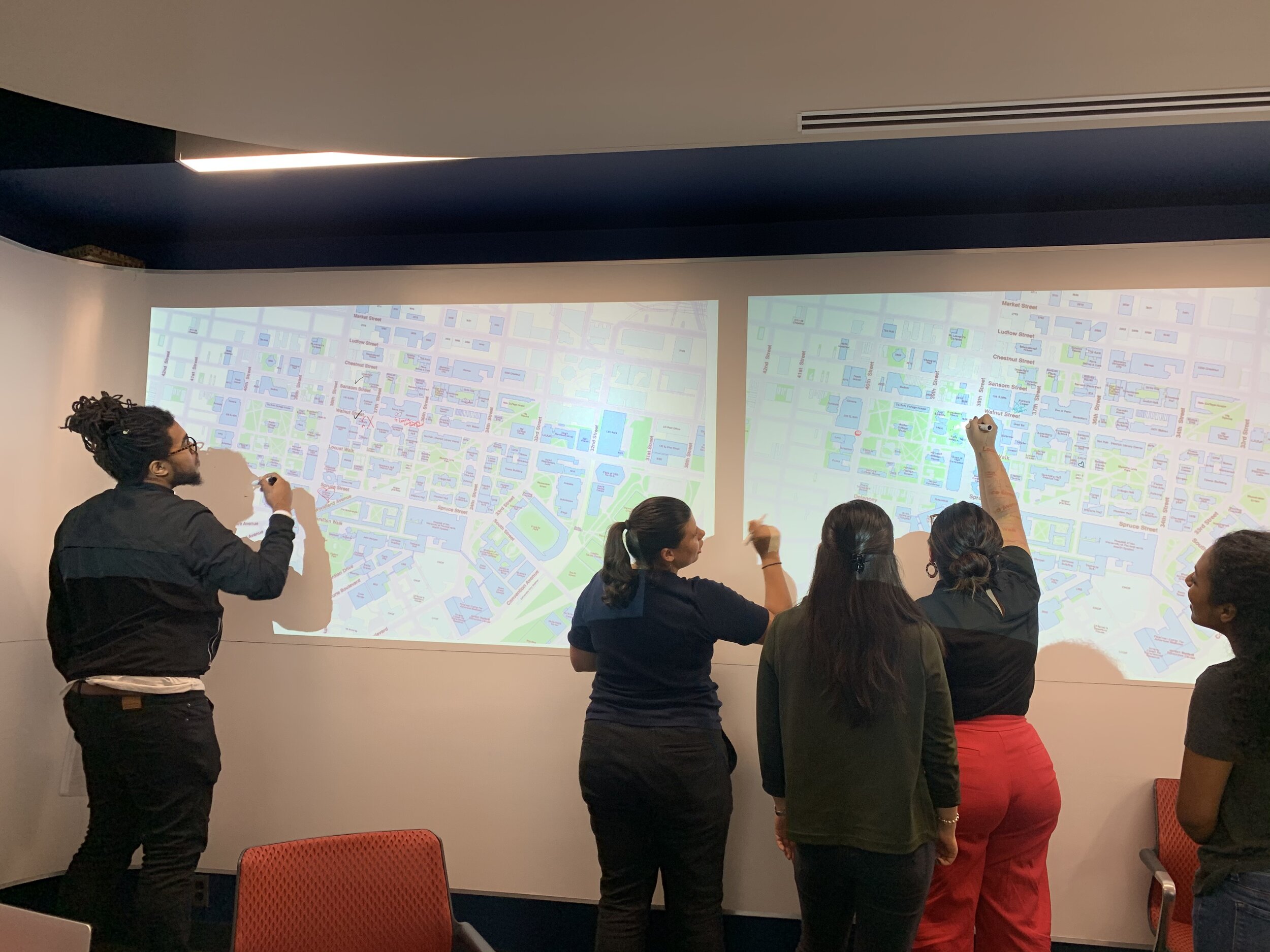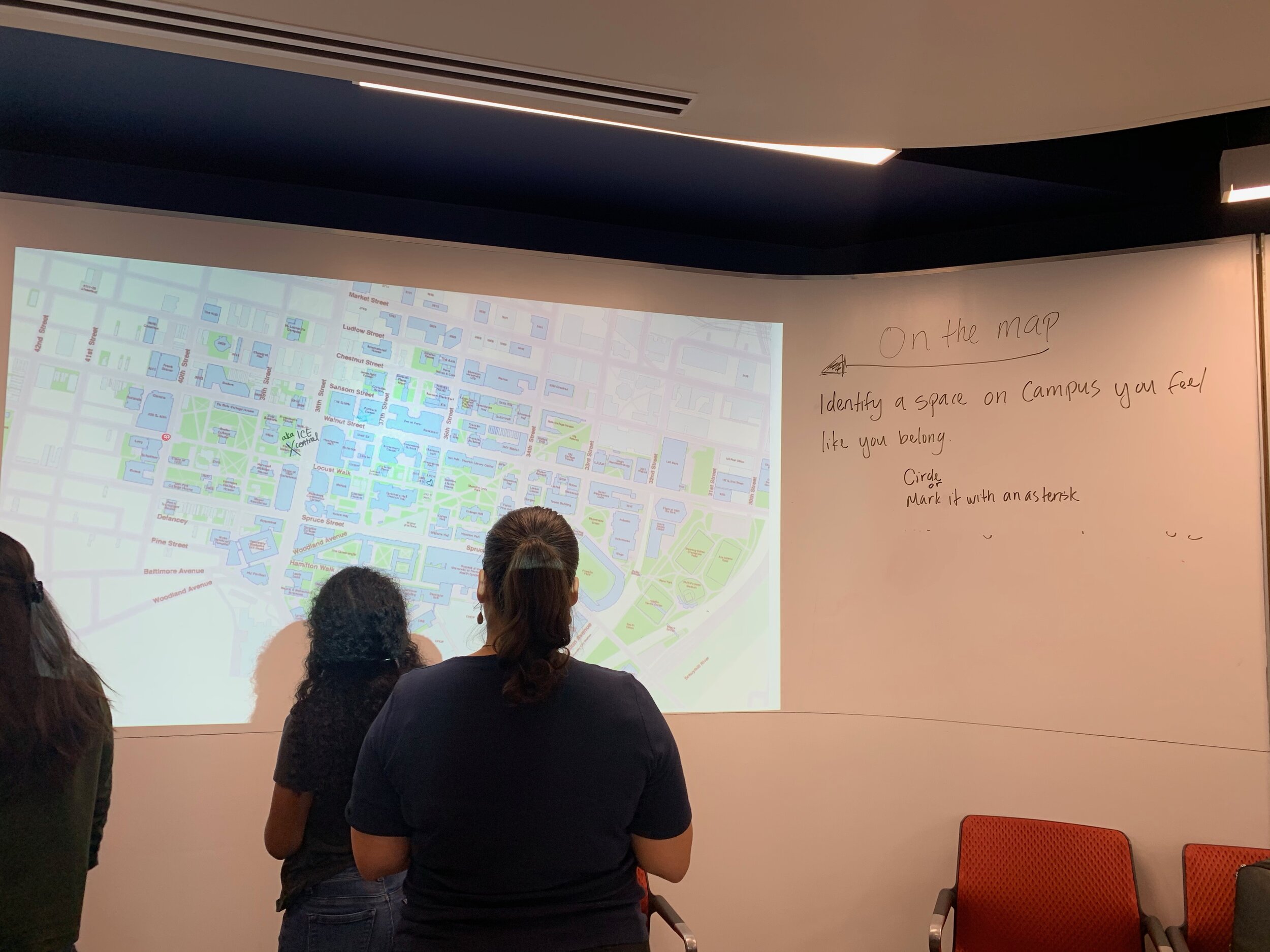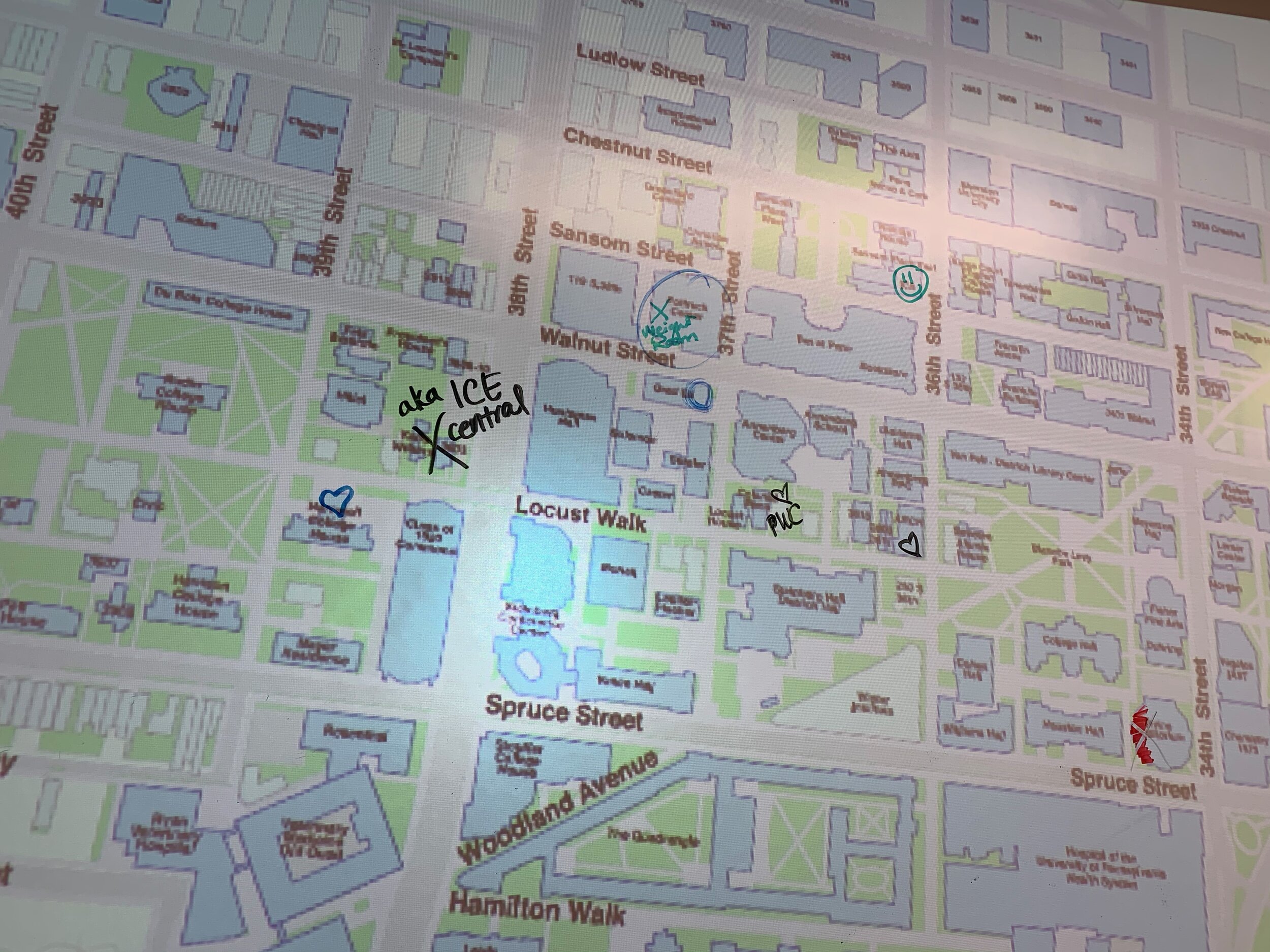Who Gets to Belong?
Week 9 - 10/24/2019
“The politics of belonging includes also struggles around the determination of what is involved in belonging, in being a member of a community, and of what roles specific social locations and specific narratives of identity play in this. As such, it encompasses contestations both in relation to the participatory dimension of citizenship as well as in relation to issues of the status and entitlements such membership entails” (p. 205).
- Nira Yuval-Davis
summary
In Week 1 Who Gets To Belong, we address the ways in which Black and Brown communities in Philadelphia have been pushed out and are excluded from belonging. Systems such as gentrification and Penntrification have been responsible for pricing out tenants and weakening thriving cultural and artistic spaces.
Class Readings
Yuval-Davis, Nira. (2006). Belonging and The Politics of Belonging. Patterns of Prejudice. 40(3),197-214.
Simon, R. D. (2017). Chapter 3: “Industry Triumph/Civic Failure”, In Philadelphia : A brief history.
Norwood, John R. (2007) . Preface (p. 5); Fallacy of “None Left Behind” (p. 23-24); Fallacy of the “Federal Standard” (p. 24-26); Fallacy of “Giving Sovereignty” (p. 26-27) In We Are Still Here: The Tribal Saga of New Jersey’s Nanticoke and Lenape Indians. Native New Jersey Publications.
“Lenape Indians, The Original Philadelphians” (7-minute audio recording)
Hunter, M. A. (2013). If These Row Homes Could Talk. In Black Citymakers (pp. 3–20).
Iskander, N., Lowe, N., & Riordan, C. (2010). The Rise and Fall of a Micro-Learning Region: Mexican Immigrants and Construction in Center-South Philadelphia. Environment and Planning A: Economy and Space, 42(7), 1595–1612.
Opening Reflection
Identify spaces on the Penn Campus where you feel like you belong or don’t belong. Circle the places you feel like you belong and X the spaces you feel like you don’t belong. What makes you feel like you belong or don’t belong in these spaces?
Based on our understanding of belonging and the politics of belonging what communities and people get to belong in Philadelphia?
Class Conversation
Residential and economic segregation of Philadelphia
Penntrification - physical and cultural displacement by Penn as an institution
Seventh Ward in Philadelphia - you see relics of black life, but no black people in that area today
Researching Sites of Erasure
In class, we broke up into small groups to research four sites of erasure in what is presently Philadelphia: the Charnae Wise Mural, the Royal Theatre, the Move Bombing, and the 1937 Walking Purchase. Undertaking this research, we asked several guiding questions:
What is no longer there? What has been changed? Who and/or what systems have driven that change?
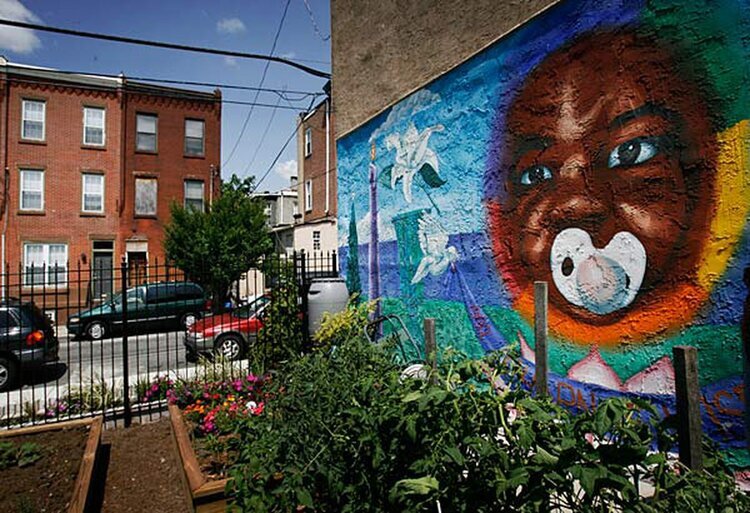
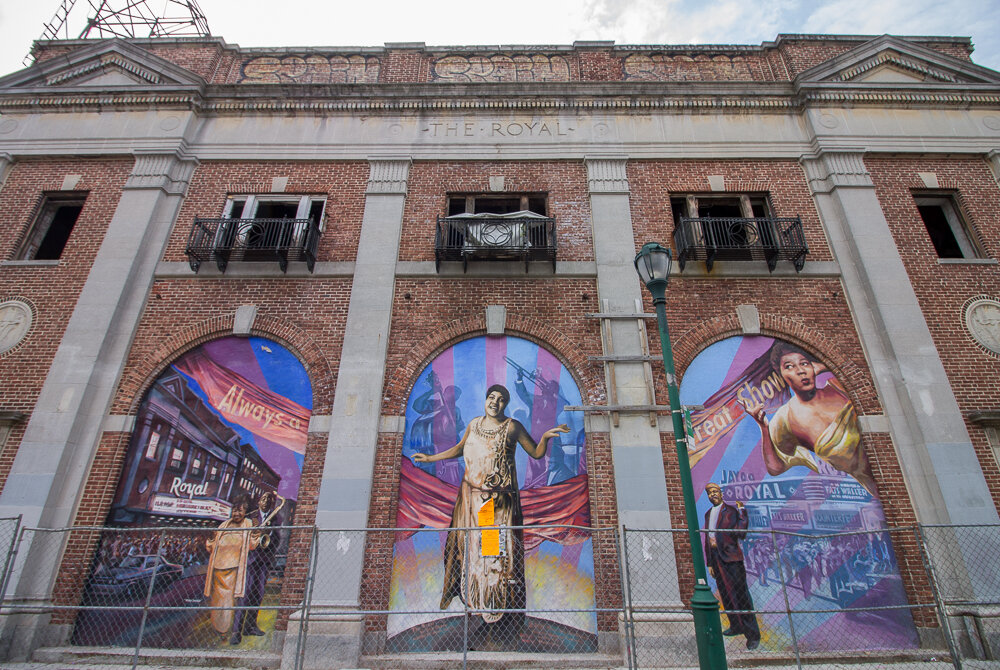
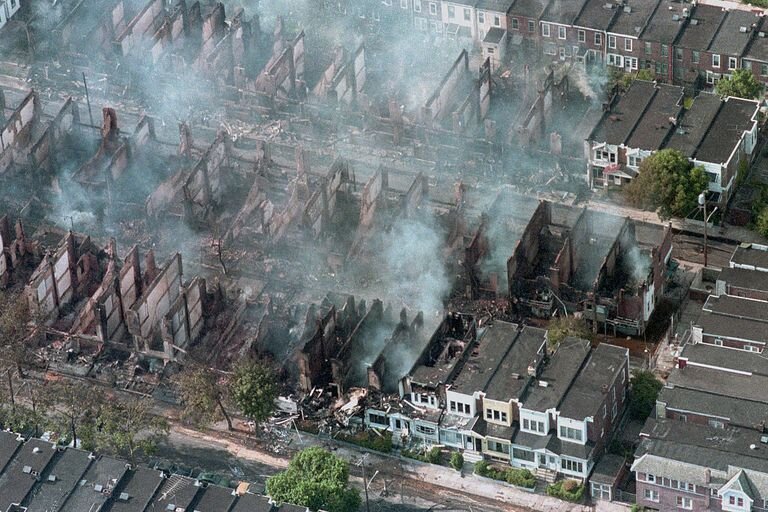
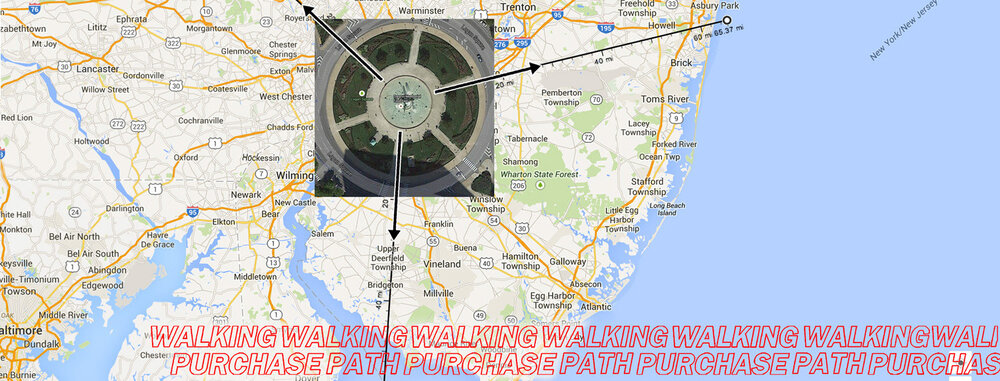
Charnae Wise Mural:
Mural memorializing deceased girl was covered up by Philadelphia Mural Arts Project
Framed as community decision, but community there has changed a lot via gentrification
Narratives of black criminality in news stories describing the story of the mural
Sanitization and abstraction of spaces and conflict with “peacemaking” murals
Whose work is consider art? Whose work is considered worthy of preserving? Relationships to social capital
Royal Theater:
First black-owned theater in Philadelphia
Closed in 1970
Has been vacant for decades
New development has kept the facade of the theater. Is this historical preservation? Is there a way to integrate the aesthetics of the building without coopting/appropriating?
One interpretation: development wants the facade of blackness, but not the substance
There had been efforts to save the theater - historical landmark recognition would have protected theater from developers, but not granted by the city. Developer gets to scoop up property once it has been devalued and to raise the prices of property around it.
MOVE bombing:
City of Philadelphia coordinated bombing of two square blocks where black commune was located
Narratives constructed around MOVE frame people as uncompliant and violent
1985 Bombing - MOVE moved to Osage Ave in West Philadelphia. Dropped a bomb, and purposefully did not put out the fire to kill the adults, children, and animals in the houses.
MOVE still exists, still fighting
Environmentalists
2 of 9 arrested in shootout have been released. 5 have died in prison.
Homes in that area are still boarded up. Now being developed into luxury apartments.
State sanctions who gets to belong and who gets to be a citizen. Bombing is a demonstration of the denial of belonging and citizenship.
The 1737 walking purchase:
Indigenous/Lenape conceptions of land ownership were different from Western conceptions of land ownership.
White settlers created a fraudulent treaty between William Penn and the Lenape Nation and in a land grab, stole 1, 110 square miles of Lenape land.
Delaware Tribe in Oklahoma has federal recognition - governmental signal is that people must have experienced removal to receive federal protections. Those who were left behind are not viewed as legitimate
Violence of nation and state as framework and logic
How do we think about reparative justice? How do we not recirculate concept of land ownership in reparation of the land?
How do we think about scholarship, when erasure has been so violent?

